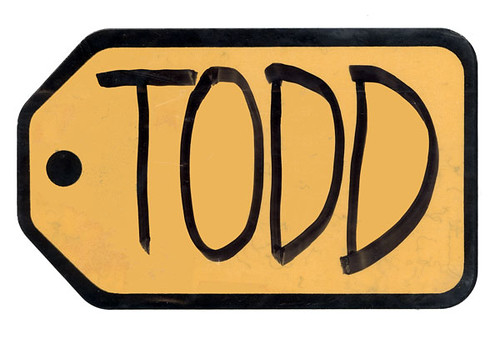
- The price is right name tags template how to#
- The price is right name tags template update#
- The price is right name tags template manual#
- The price is right name tags template code#
Note: To simplify the example, the XML output shown below has been modified from the actual output from the Payables report. Each row of the invoice table will repeat for each invoice that is reported.įollowing is the XML file that will be used as input to the Payables Invoice Register report template: The elements of the template that will repeat when the report is run.įor example, all the fields on the template will repeat for each Supplier that is reported. The data fields that are defined on the templateįor example: Supplier, Invoice Number, and Invoice Date The following is a sample layout for a Payables Invoice Register: Associating the XML Data to the Template Layout Instructions and tutorials for using the Template Builder are available from the readme and help files delivered with the tool.
The price is right name tags template manual#
Manual steps for performing these functions are covered in this chapter.
The price is right name tags template update#
Preview your template with sample XML dataīrowse and update the content of form fieldsĮxtract boilerplate text into an XLIFF translation file and test translations The Template Builder is tightly integrated with Microsoft Word and allows you to perform the following functions: Use it in conjunction with this manual to increase your productivity. It automates many of the manual steps that are covered in this chapter. The Template Builder is an extension to Microsoft Word that simplifies the development of RTF templates.
The price is right name tags template how to#
This chapter presents a sample template layout with its input XML file to illustrate how to make the proper associations to add the markup tags to the template.

When you design your template layout, you must understand how to associate the XML input file to the layout. Use the formatting features of your word processing application and save the file as RTF. Generate a sample of your source report in XML.īe familiar with the formatting features of your word processing application.Ĭreating an RTF template file consists of two basic steps: Know the business rules that apply to the data from your source report. Prerequisitesīefore you design your template, you must: This guide describes how to create RTF templates using both methods.
The price is right name tags template code#
Note: If you use XSL or XSL:FO code rather than the simplified syntax, you must use the form field method. BI Publisher supports Microsoft Word 2000 (or later) with Microsoft Windows version 2000 (or later). Using Microsoft Word's form field feature allows you to place the syntax in hidden form fields, rather than directly into the design of your template. Use any word processing application that supports RTF version 1.6 writer (or later) to design a template using BI Publisher's simplified syntax. Supported ModesīI Publisher supports two methods for creating RTF templates: If you wish to include code directly in your template, you can include any XSL element, many FO elements, and a set of SQL expressions extended by BI Publisher. In addition to your word processing application's formatting features, BI Publisher supports other advanced reporting features such as conditional formatting, dynamic data columns, running totals, and charts. If you are familiar with XSL and prefer not to use the simplified tags, BI Publisher also supports the use of pure XSL elements in the template.

These tags associate the XML report data to your report layout. You can therefore create report designs using many of your standard word processing application's design features and BI Publisher will recognize and maintain the design.ĭuring design time, you add data fields and other markup to your template using BI Publisher's simplified tags for XSL expressions. When you save a document, RTF is a file type option that you select.īI Publisher's RTF Template Parser converts documents saved as the RTF file type to XSL-FO. Rich Text Format (RTF) is a specification used by common word processing applications, such as Microsoft Word. Oracle Business Intelligence Publisher User's Guide Skip Headers Oracle Business Intelligence Publisher User's Guide


 0 kommentar(er)
0 kommentar(er)
